This healthy Mediterranean Salad recipe makes a flavorful, crunchy salad. This salad is packed with cucumber, tomatoes, riced cauliflower, and feta cheese. Our recipe makes an easy and fool-proof summer salad for all occasions. This fresh salad is also suitable those following a low-carb, keto, diabetic, Banting, or vegetarian diet.
The recipe for Mediterranean Salad
This fresh Mediterranean salad is a flavorful crunchy summer salad. Pack it for perfect for a picnic in the park or enjoy it for a quick and easy lunch. The lemon dressing and kalamata olives provide a nice tang to make the flavor of this salad really pop.
To pack this vegetarian salad with extra nutrition and texture, we’ve added riced cauliflower to make it more filling than the traditional salad and replace the carbs, such as couscous, that are often found in variations of Mediterranean salads.
This actually one of my favorite recipes on the blog because it’s nearly foolproof and so easy to adjust. You can swap out most the ingredients depending on what you have on hand and still have a crave-worthy end result.
For example, if you don’t have red onion, you can use yellow onion or sweet onion, you can add some chopped bell pepper for an extra pop of color and flavor.
Don’t have red wine vinegar? No problem. Simply substitute apple cider vinegar or white wine vinegar. The versatility of this salad makes this recipe a staple wherever I travel because I can always find the basic ingredients to bring this salad to life.
The inspiration for this healthy Mediterranean Salad
My version of this classic recipe has actually been years in the making. I actually began to develop it several years ago as a quick everyday salad and it became a staple in my diet while I was traveling in the Middle East.
While I was there, some of the easiest vegetables to find in any Souq (market) or vegetable stand were cucumbers, tomatoes, and onions. At the house where I lived, there was even a lemon tree in my backyard. So, at that time, pure necessity and convenience led to the creation of this recipe.
This salad also doesn’t require any cooking which was a life saver in a small shared kitchen. Each time I made it, it would be a little different, but, no matter the variations I made, it always ended up being delicious.
Normally I’d make it at the beginning of the week so I’d have a nice healthy snack for the next few days. To add to the health benefits, sometimes I used apple cider vinegar. Raw apple cider vinegar has a range of potential health benefits1.Using the vinegar was an effortless way of doing to help me stay healthy amongst the chaos of traveling and classes.
We partner with Amazon and other companies. Therefore, some of the links on this site are affiliate links which means we make a small commission from any sales to help keep the recipes coming! You do not pay any more. Thank you for your support!
Is it okay to eat the skin of a cucumber?
Absolutely! In fact, I choose to keep on the cucumber skins on in this recipe for a little extra crunch and pop of color. It also saves time from the tedious work of peeling all of the cucumbers. Some people do find the cucumber skins to be slightly bitter in taste. If you find this to be the case, you can peel the cucumbers.
What to serve with Mediterranean Salad
This salad makes the perfect centerpiece for lunch or a flavorful side for a range of Mediterranean-inspired dishes.
We recommend that you try pairing this salad with our Greek Gyro Meatballs and Tzatziki Sauce for a greek-inspired feast. Or try pairing this Mediterranean salad with Lemon Garlic Shrimp Sheet Pan Dinner with Broccolini for a nice summery combination. You could also pair it with this Low Carb Mediterranean Chicken recipe from Easy Health Living.
Can I make this Keto Mediterranean Salad ahead?
Of course! In fact, one of my favorite things about this salad is that you can keep it on hand for whenever you need a little snack. In my opinion, this salad is actually better when it’s had a little extra time for all of those flavors to marinate and get to know each other. Although you can eat it directly after making it (reward yourself for all that hard work!), I like to give it a couple hours before serving or even let it sit overnight to really optimize its flavor.
How to store Mediterranean Salad
Storing this Mediterranean salad couldn’t be simpler. Simply put it in a large air-tight dish and store in the fridge until serving. You may notice a little bit of liquid forming at the based of the dish. This is because the salt pulls out some of the water out of the cucumbers. If you’d like to prevent this, you can omit the salt from the dressing and then add it just before serving. Ultimately, this extra liquid will have no effect on the taste of this dish.
Can Mediterranean Salad be frozen?
Unfortunately, due to the high water content of cucumbers, freezing this salad can be a tricky endeavor. Typically freezing cucumbers and tomatoes leads to significant change in texture. This change would be undesirable in this crunchy fresh salad. So, I would recommend keeping this salad fresh by storing it in fridge. It should stay tasty for at least three days.
Final words
This salad has become one of my favorite low-carb recipes. I hope it becomes one of yours as well. Enjoy!
Harper
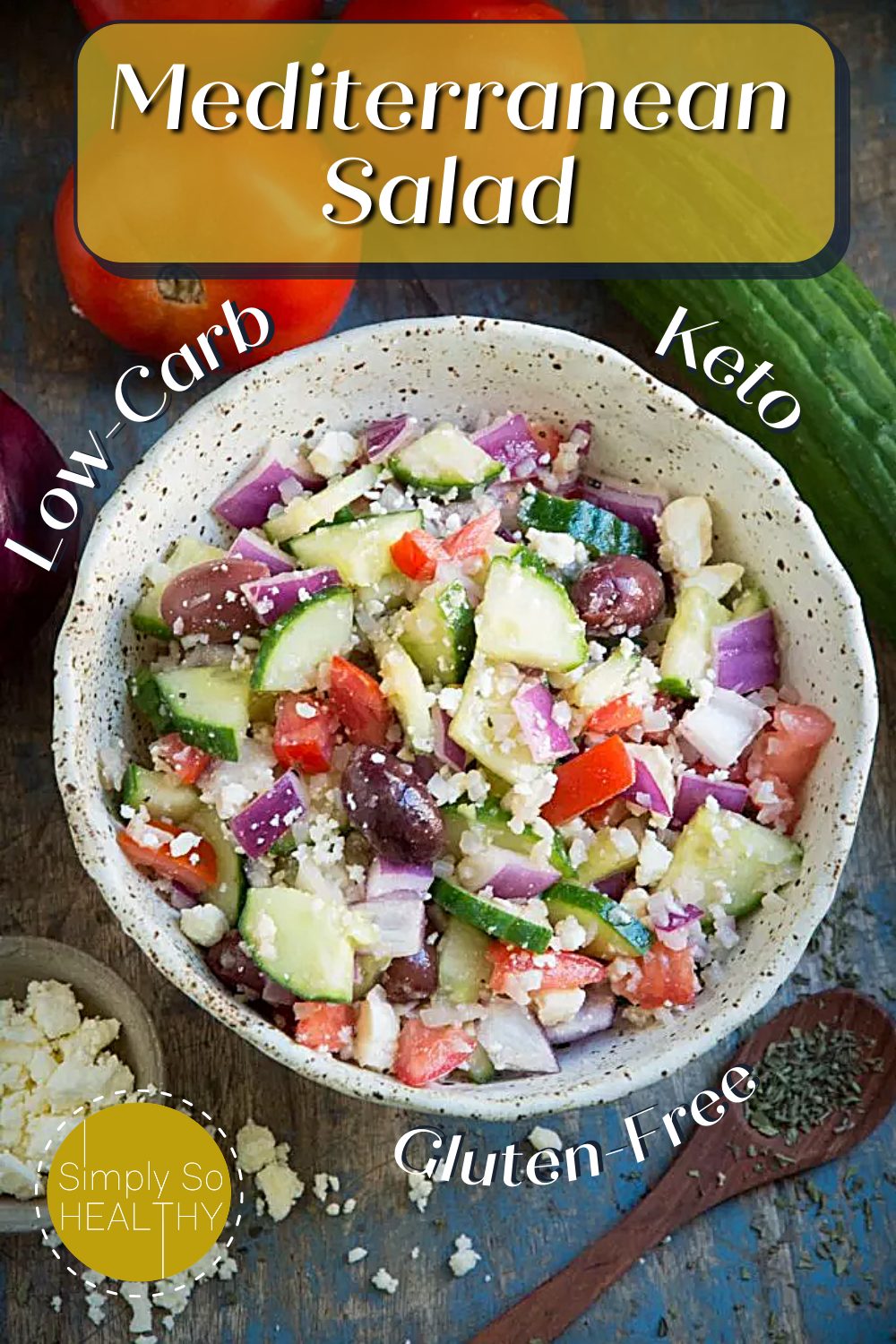
This low-carb Mediterranean Salad highlights the flavors of summer. Refreshing cucumbers, juicy tomatoes, and a touch of feta make this salad special.
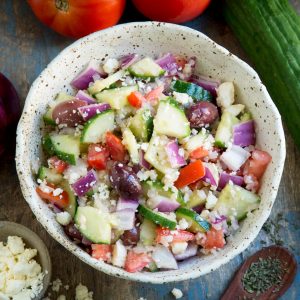
Mediterranean Salad (Keto Friendly)
This healthy Mediterranean Salad recipe makes a flavorful, crunchy salad. This salad is packed with cucumber, tomatoes, riced cauliflower, and feta cheese. Our recipe makes an easy and fool-proof summer salad for all occasions. This fresh salad is also suitable those following a low-carb, keto, diabetic, Banting, or vegetarian diet.
Ingredients
Cauliflower Mixture
- 1 Tbsp olive oil
- 10 ounces riced cauliflower fresh or frozen
Salad Mixture
- 2 large cucumbers coarsely chopped
- 1 medium red onion chopped finely
- 3 medium tomatoes coarsely chopped
- 1 cup feta cheese crumbled
- 1 cup kalamata olives pitted
Dressing
- 2 Tbsp olive oil
- 3 Tbsp red wine vinegar
- 1/2 tsp stevia erythritol blend sweetener
- 1 Tbsp lemon juice
- 1/2 tsp oregano dried
- 1 clove garlic crushed
- salt and pepper to taste
Instructions
Cauliflower Mixture
Add the 1 tbsp olive oil to a medium pan over low heat. Then add the cauliflower and stir frequently until cooked through, about 5 minutes. Remove from heat and let cool completely before adding to the salad.

The Salad Mixture
Combine cucumbers, red onion, and tomatoes in a large bowl and toss until combined.

Dressing
Combine the olive oil, vinegar, sweetener, lemon juice, oregano, garlic, and salt and pepper in a small bowl and whisk until thoroughly combined.

In a large bowl, combine the riced cauliflower, the salad mixture, and the dressing and toss together. Finally, add the olives and feta cheese and toss until thoroughly incorporated. Store in the fridge until serving. Flavor is best with at least an hour for the salad to marinate before serving.



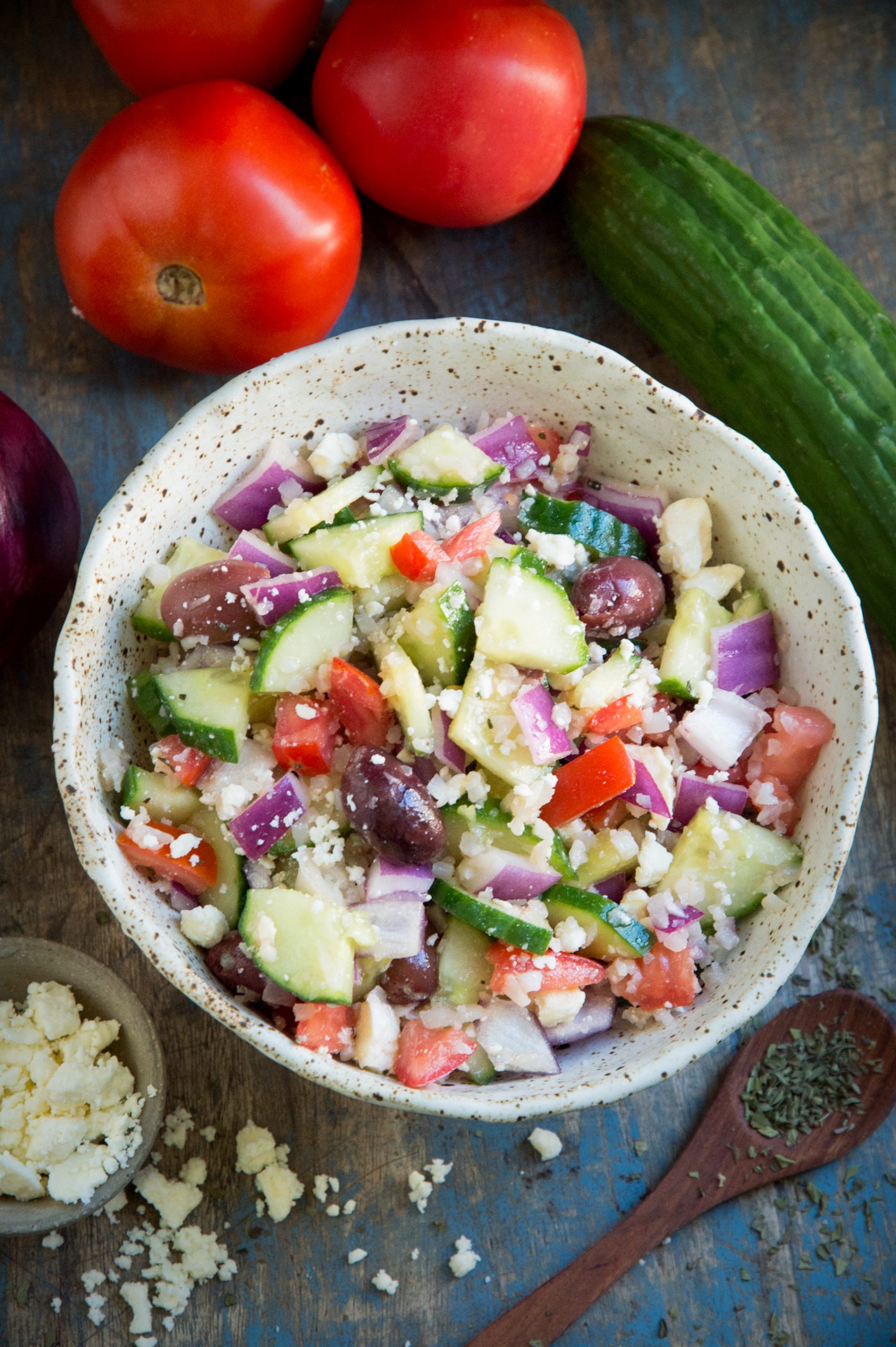
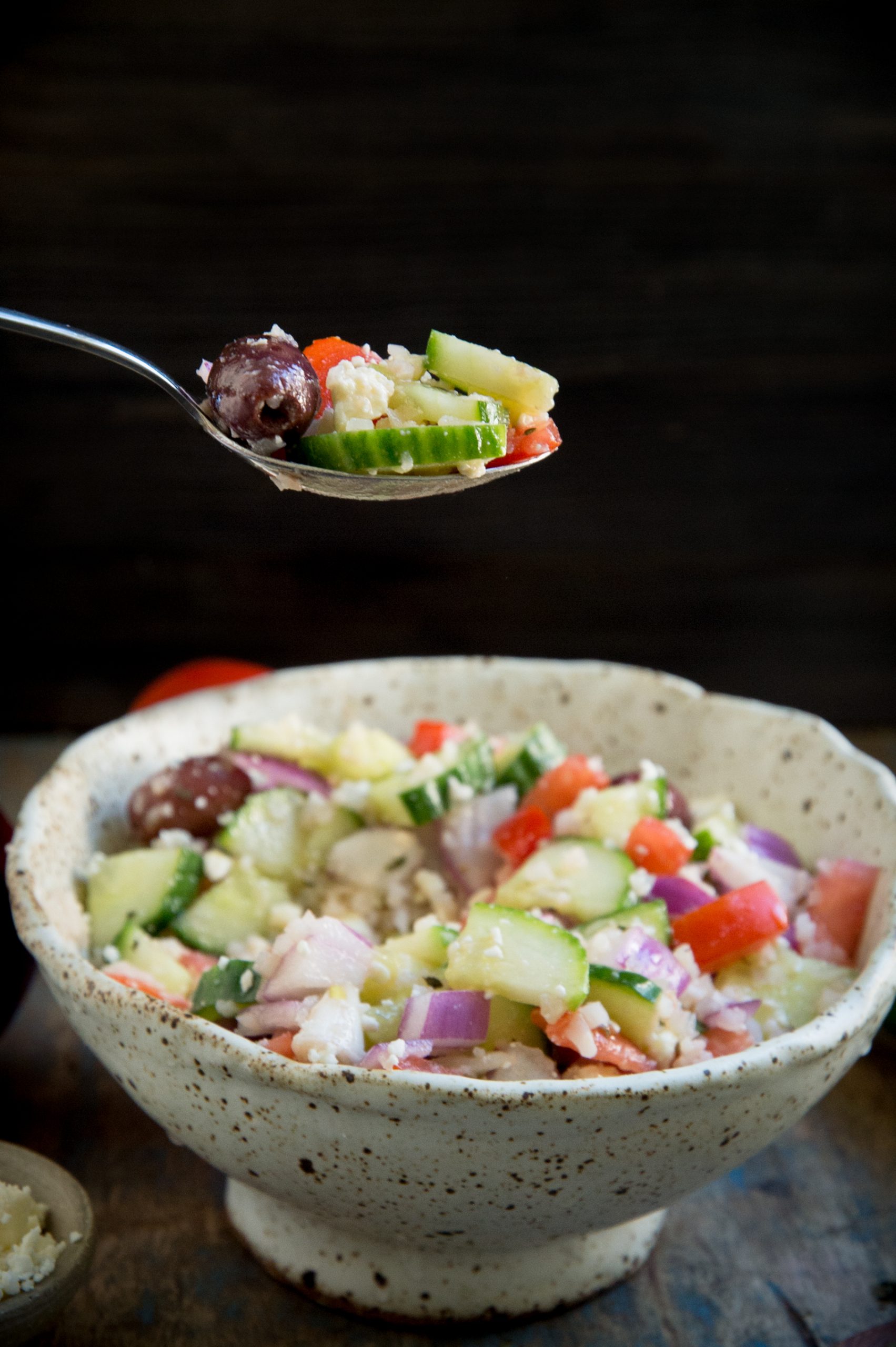
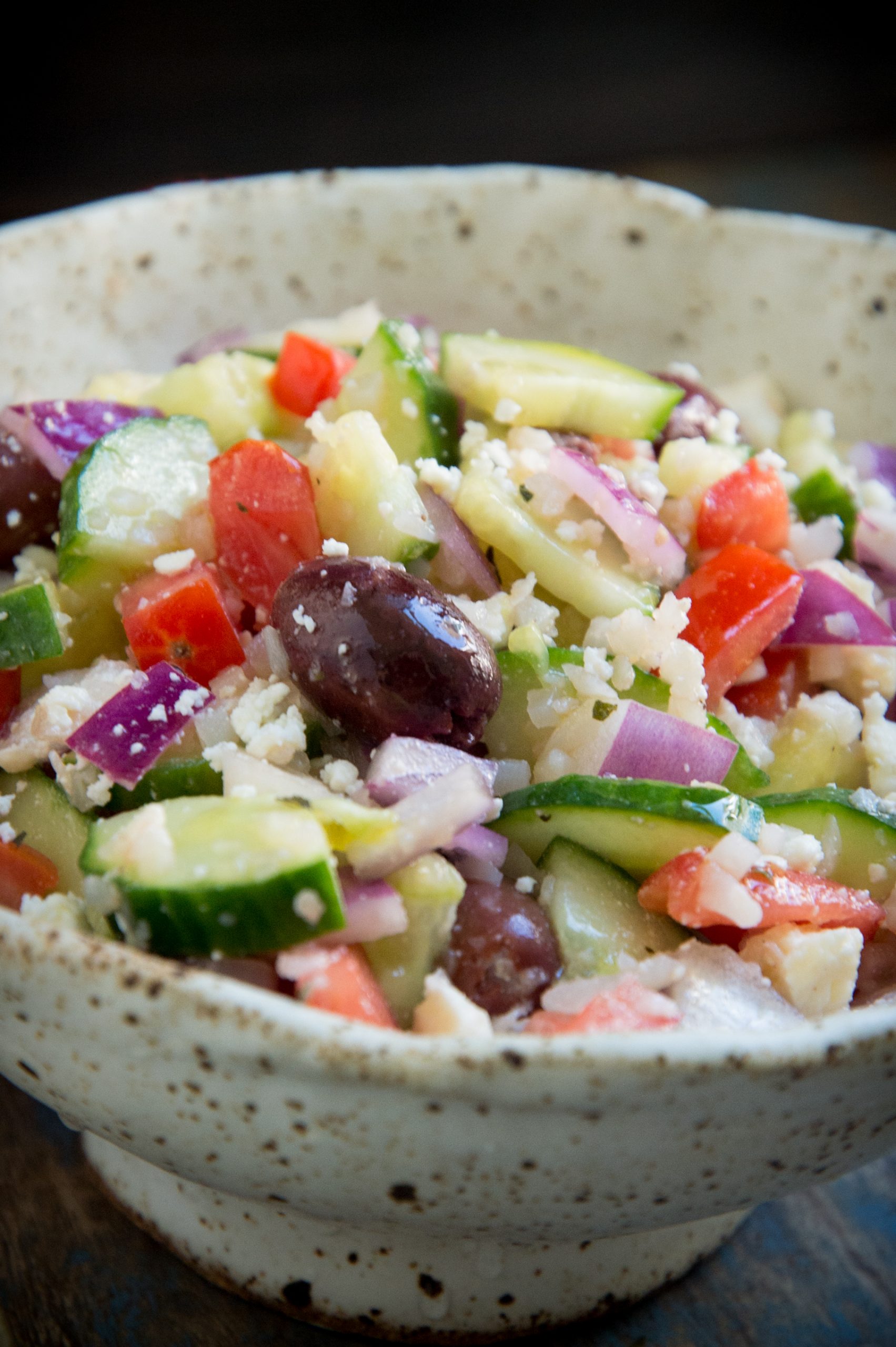
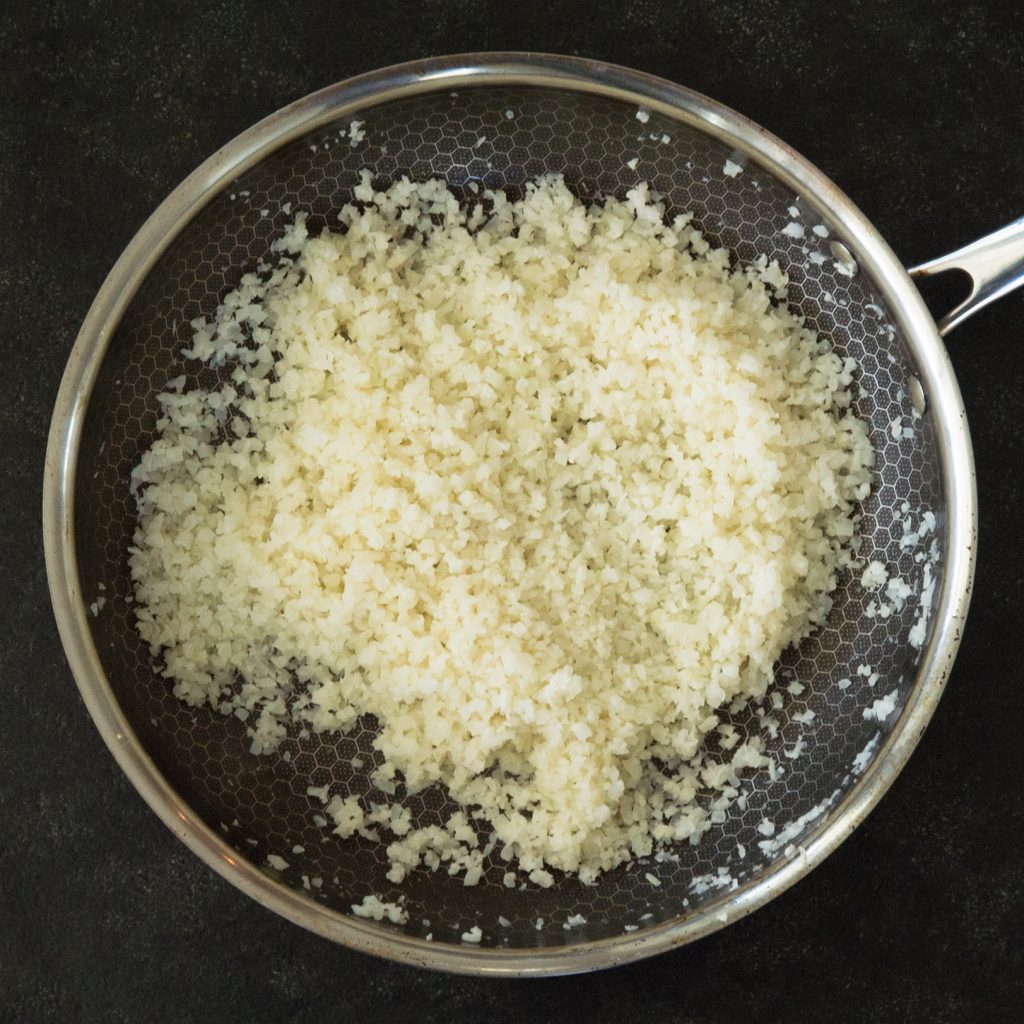
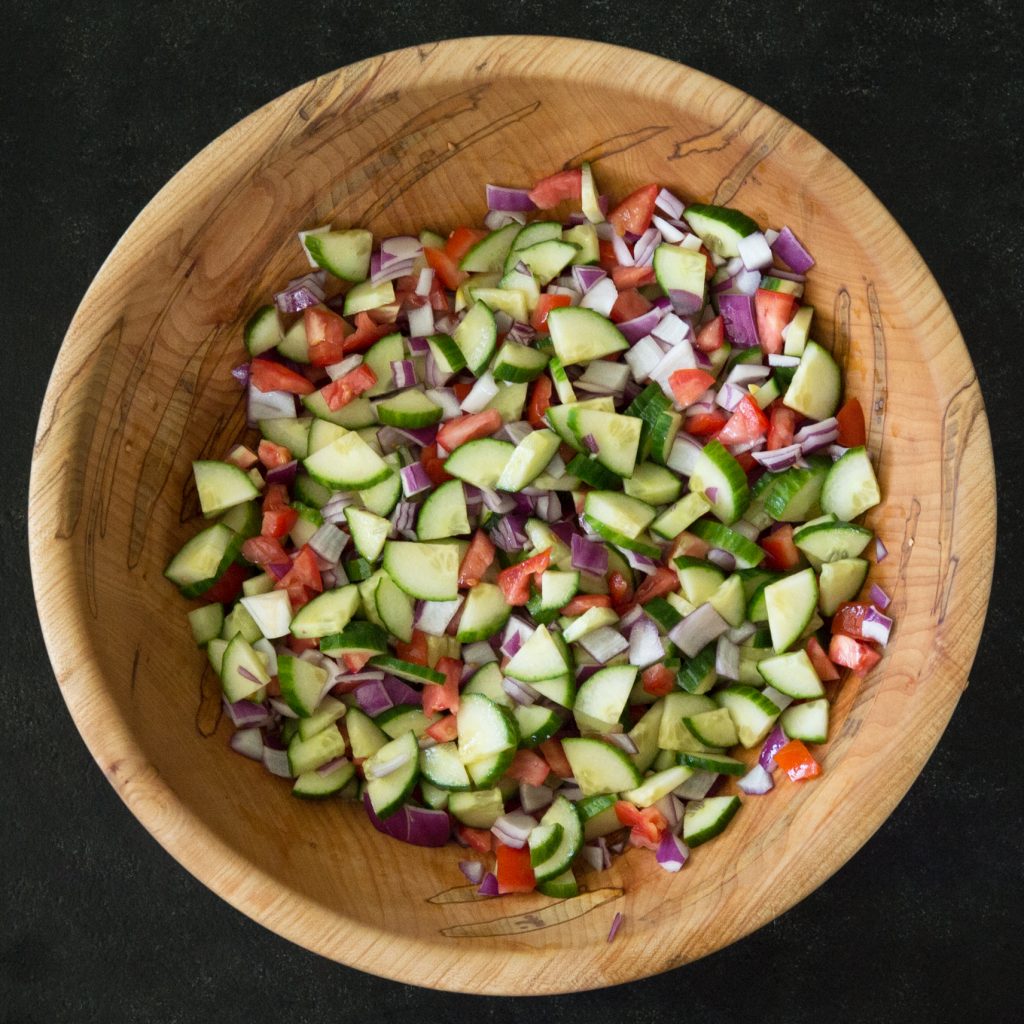
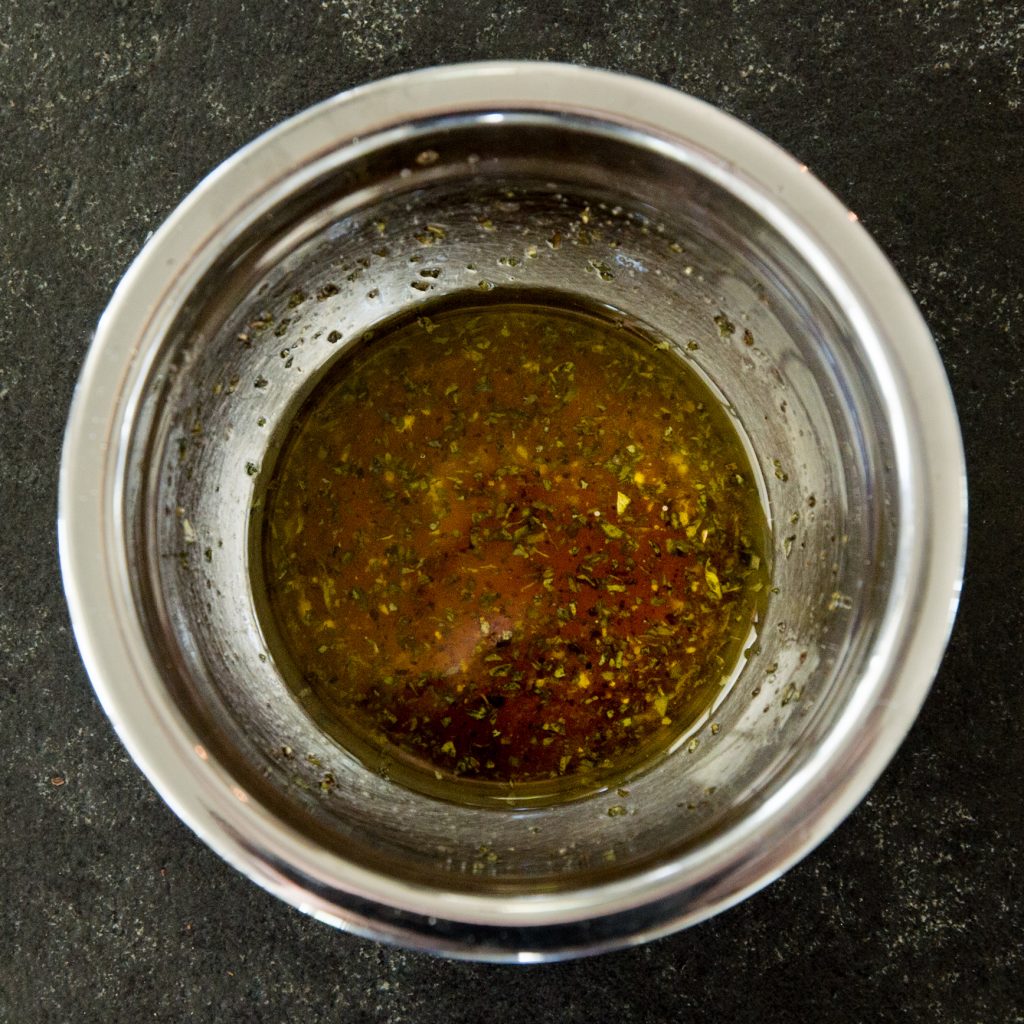
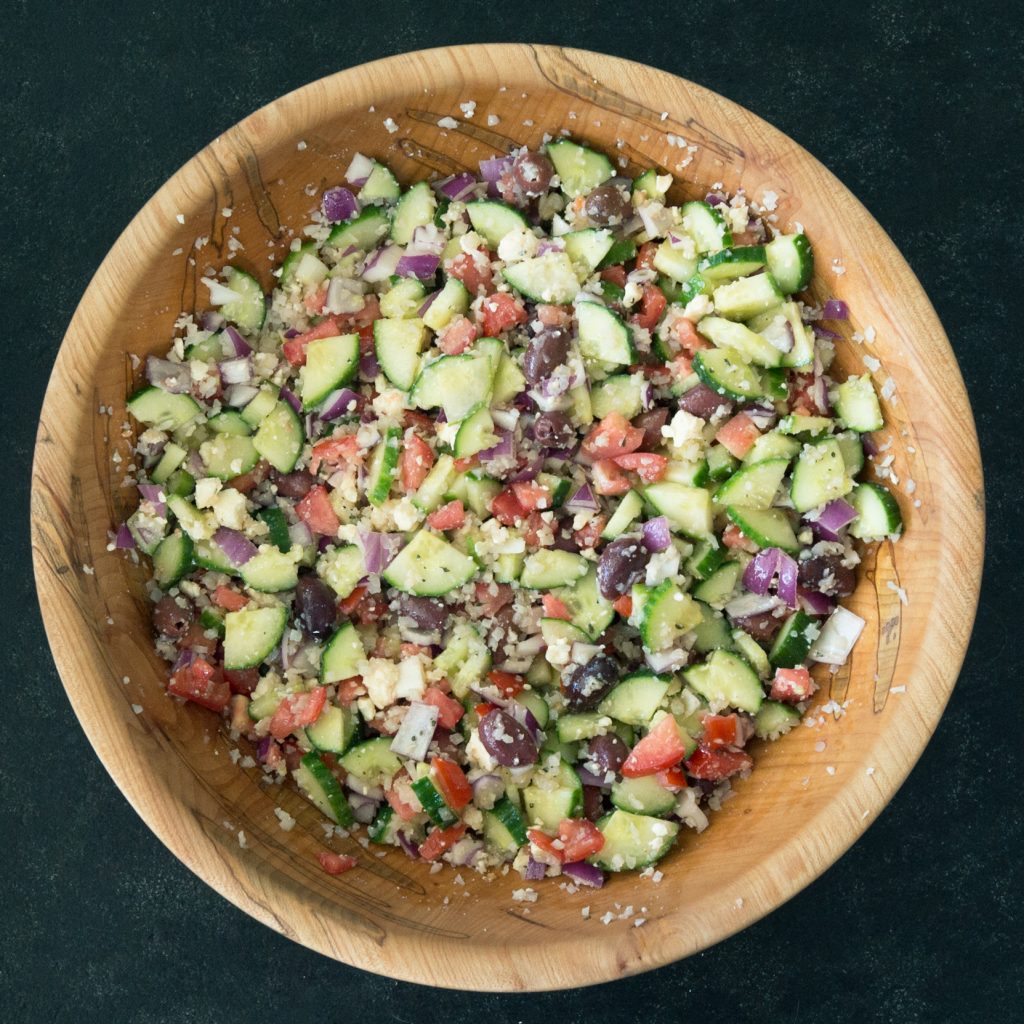


I loved all the fresh ingredients in this salad and the riced cauliflower gave it a really nice flavor and texture! Will definitely be making this again!
I love all the fresh tasting ingredients in this salad! Will be making it again and again this summer.
Fresh ingredients are such an important key in making salad and this salad has it all! Love the crumbled feta on top, it gives great texture! Can’t wait to make this delicious Mediterranean salad!
Loved how refreshing and easy to make this salad was. I’ll need to make it often now!
How long will this last in the fridge? Looking for things to make for dinner and eat for lunch the next day
About 3 days.
It tastes even better the next day.
-Annissa
I used to make this same salad but w/o the cauliflower and I added chopped walnuts and blueberries- but with balsamic vinegar. Too much sugar now, so I am glad to find your recipe for a dressing with a lower carb count. Thank you!
Glad this one worked for you!
-Annissa
This salad is SO DELICIOUS!! I didn’t change a thing (except I went maybe a tad lighter on the Stevia as I don’t like a very sweet dressing) and it was just fab-o! I added some grilled boneless, skinless chicken breast to make it even more of a complete meal. The cauliflower is such a nice textural element that I didn’t even miss the pasta I would usually use in such a salad. A real keeper!